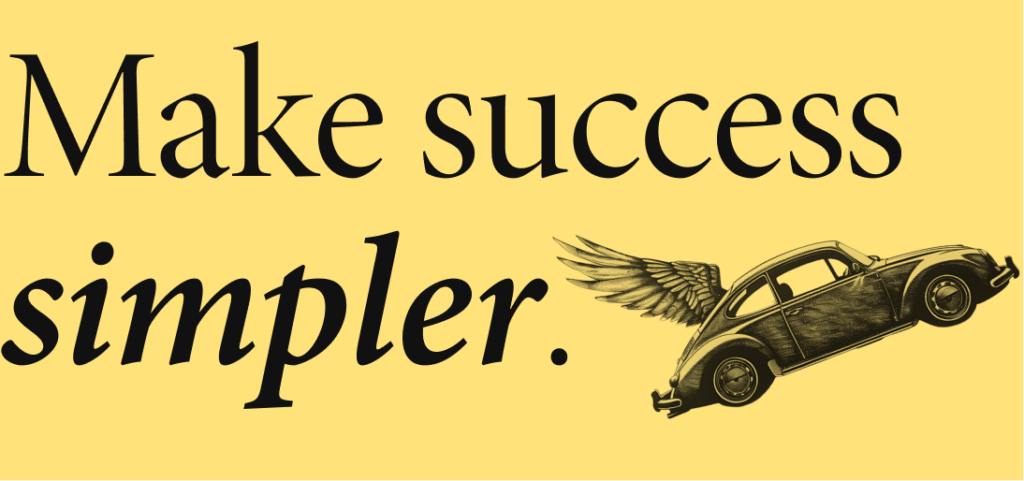Welcome to One Thing Better. Each week, the editor in chief of Entrepreneur magazine (that’s me) shares one way to be more successful and satisfied — and build a career or company you love.
Today’s one thing: Demanding answers.
That one thing, better: Appreciating logic.

The best question you can ask is “Why?”
The worst question you can ask is “Why?”
Why? Here’s why.
Right now, you’re being impacted by someone else’s actions.
Maybe your company made a big change. Your boss issued some new order. A client made an unexpected decision.
You’re stuck with the consequences: Your job is more frustrating, your work is more complicated, and your future is less clear.
There’s one question you want to ask: “WHY???”
But before you do, remember: Everything rides on how you ask it. So before you get there, you must appreciate — truly, openly, earnestly appreciate — how the other side is thinking.
Today, I’ll show you how to do this by building their “logic chain.” And to start, I’ll tell you about a senior manager at a large company who learned this lesson the hard way.
What’s a logic chain?
Lately, I’ve been doing a gratifying kind of consulting: When companies go through a big change, they ask me to speak with groups of highly valued, highly concerned employees. We have hard, deep conversations about their future, about how to feel more adaptable, and how to take their next steps. (If this sounds useful to you, get in touch!)
A few months ago, I did one of these sessions in a large conference room. Thirty senior leaders sat around a table, flummoxed and frustrated. Basic parts of their jobs just got harder, and they felt ignored. Some were clearly thinking about quitting.
“Do you know why the company made these decisions?” I asked.
They did not. “To screw with us?” one joked.
So here’s what I told them.
Let’s start with a basic assumption: Most people do not act randomly. They act based on their own internal logic, and their actions follow what I call a logic chain. The chain is simple: “If X is true, then Y is true, then Z is true, which means I must take this action…”
Every human operates off a logic chain. Every decision you’ve ever made was based on a logic chain. Why did you take or quit that job? Why did you date or dump that person? Because it fit your logic at the time — because of X, you did Y.
Not everyone’s logic is good, of course. But set that aside for now. Instead, it’s just important to remember: People combine what they see, what they learn, and what they believe to be true, and make the best decisions they can.
So your first job is…
You must learn their logic chain
If you want to understand anyone’s decisions, then you must understand their logic chain. Even if you disagree with it. Even if you think they’re nuts. You must appreciate how they reach their decisions — or at least, try.
How? Well, start by guessing. Assume they have good intentions. Now build a logic chain based on what they might see, so that it explains their current actions. Like:
“OK, my boss’s job is to keep the company healthy and to grow sales, so that’s what she wakes up every morning worried about. And now she’s seeing sales go down in this area. She’s also watching the industry trends, where she’s seeing other kinds of sales go up. And she’s looking at where we’ve invested heavily in the last year, and seeing it misalign with the trends. So now she’s thinking…”
What’s the point of this? Two reasons:
- Once you imagine other people’s logic chains, they become more human. They’re no longer agents of chaos. They’re people making the best decisions they can (again, even if you disagree with them).
- You can start to develop your own informed decisions. If someone is operating under this logic chain, are you willing to follow? Is it time for you to leave? Or maybe, now that you know how they’re thinking, can you influence where they’re going?
But wait — before you make any final decisions, let’s stop guessing.
It’s time to ask the big question: Why?
The right and wrong kind of “why?”
Let’s go back to my meeting with the senior leaders. I explained the logic chain to them, and they started to imagine their company’s changes from their CEO’s point of view. Then one of the leaders spoke up. I’ll call him Guy.
“I just had a meeting with our director, where I tried to understand all this, and the director just got angry,” Guy said.
“How did you ask the director?” I asked.
Guy thought a second, then got sheepish and admitted what happened. The director was explaining the new process, and Guy snapped and said, “WHY???”
No wonder it went poorly.
We often ask “why?” when we’re confused or lost, which means we’re vulnerable and defensive. In this context, “why?” is confrontational. It’s like asking, “Why are you taking this away from me?” Or maybe, “Justify your terrible actions to me!”
This is the wrong way to ask “why” — when it’s all about you, the person asking the question.
New to this newsletter? Subscribe!
Here’s the right way to ask “why?”
Try this, I said: When you talk with someone you disagree with, start by acknowledging what you do agree on. And in my example, agreement was simple: The senior leaders and their bosses both want the company to succeed.
During moments of great change, it can be hard to keep this in mind because:
- YOU wonder if the other person is really committed to success, given how disruptive they’re being.
- THEY wonder if you’re really committed to success, because they’re not sure you’re on board with what they need.
You need to establish that shared goal, and reiterate your commitment to it. Say something like, “I know we both want sales to go up, and I want to help — but I’m feeling lost on this new process. Can you explain why it’s happening, so that I can help contribute to its success?”
Now really listen to their answer. They might see or know something you don’t. Their logic chain might be correct.
Logic chains are everywhere!
This isn’t just about corporate reorgs. This works for any disagreement or confusion with anyone — your employees, your friends, your partner. And here’s the best part: There’s no harm in seeing something from their point of view. This process contains only upside.
Once you see where they’re coming from, do you need to follow them? No. Maybe they’re on a different path than you now. Maybe you think they’re fundamentally wrong, and it’s time for you to leave. Or maybe you give it three or six months, see if they’re right, and then decide.
Either way, I told the senior leaders at that company I consulted for — once you go through this process, you will have more information. No more guessing.
Everyone acts based on their own logic chain, and that includes you. Your feelings, and your actions, and driven by your own sense of logic. Maybe you’re right. Maybe you’re wrong. You won’t know until you pull that chain tightly, and make sure every link is tight, secure, and in the proper place. Then you can act — not out of fear, or anger, or feeling hurt. But because you know more than you did before.
That’s how to do one thing better.
